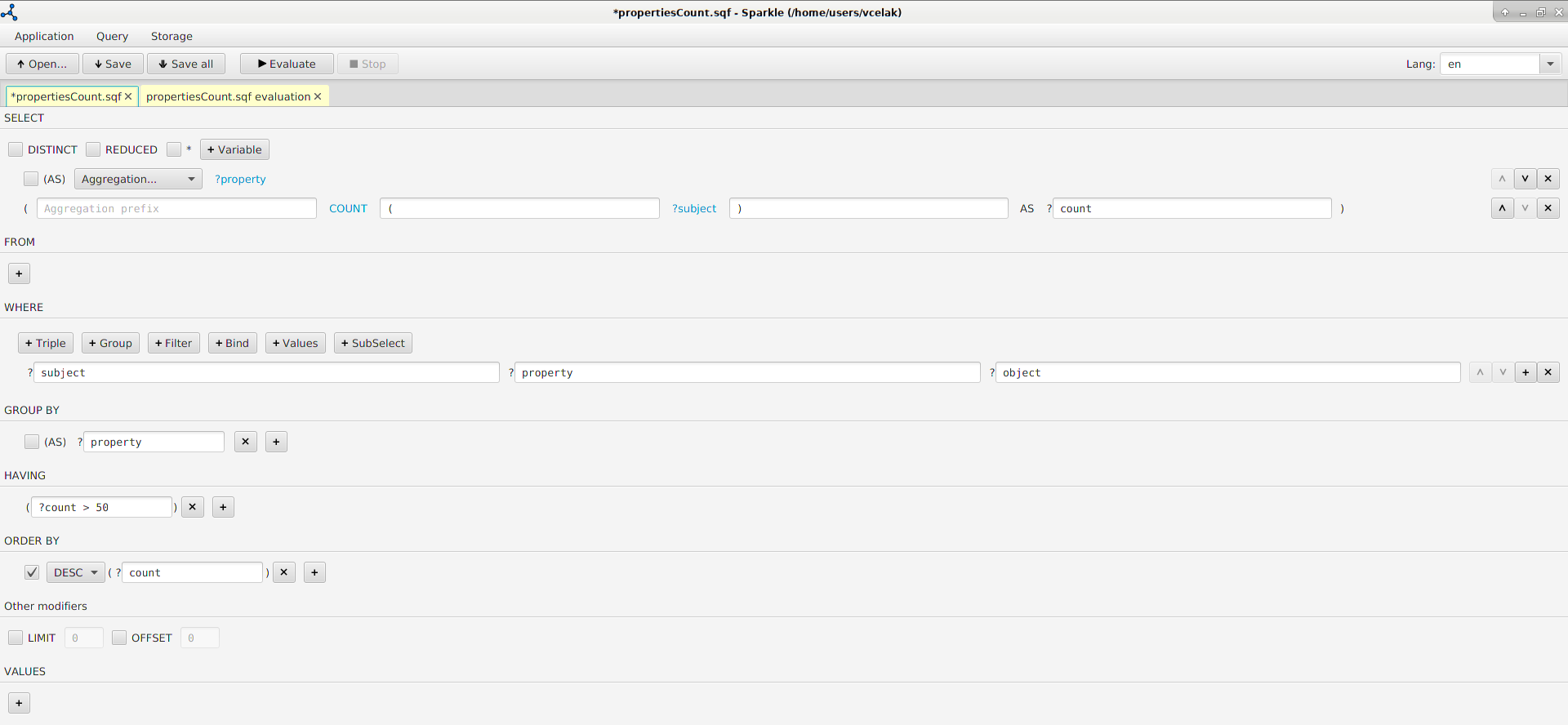Examples
Example 1 - main diagnosis of patients
Example of list of patients with their main diagnosis. This means we want:
- get patient ID (?id), sex (?sex), date of diagnosis (?diagDate) and diagnosis date (?code - as URI)
- use the https://mre.zcu.cz/metadata/medical graph
- main diagnosis has value 1 of ds:diagOrder property - used in
FILTERclause. - order by patient's ID in an ascending order
Query in Sparkle's form-based environment is shown on the next figure.

Results you will see when you push Evaluate button.

You can switch to Query tab showing generated SPARQL query in text editor with simple highlighting and auto-complete functions Ctrl + Space when query evaluated.

The generated SELECT query in the SPARQL is:
PREFIX xsd: <http://www.w3.org/2001/XMLSchema#>
PREFIX ds: <http://mre.zcu.cz/ontology/dasta.owl#>
SELECT ?id ?sex ?diagDate ?code
FROM <https://mre.zcu.cz/metadata/medical>
WHERE
{ ?diagnosis a ds:ActualDiagnosis ;
ds:diagOrder ?diagnosisOrder ;
ds:datetimeEvent ?diagDate ;
ds:diagCode ?code .
?diagnosis ds:patient/ds:patientID ?id .
?diagnosis ds:patient/ds:sex ?sex
FILTER ( xsd:int(?diagnosisOrder) = "1"^^xsd:int )
}
ORDER BY ASC(xsd:int(?id))You can download example 1 in Sparkle's SQF.
Example 2 - properties count in RDF/RDFS
Query in Sparkle's form-based environment is shown on the next figure.

Results you will see when you push Evaluate button.

You can switch to Query tab showing generated SPARQL query.

The generated SELECT query in the SPARQL is:
SELECT ?property (COUNT(?subject) AS ?count)
WHERE
{ ?subject ?property ?object }
GROUP BY ?property
HAVING ( ?count > 50 )
ORDER BY DESC(?count)You can download example 2 in Sparkle's SQF.